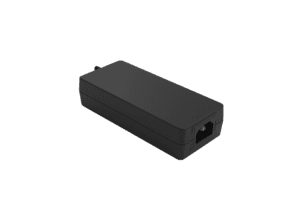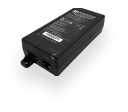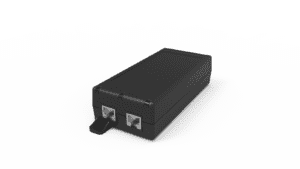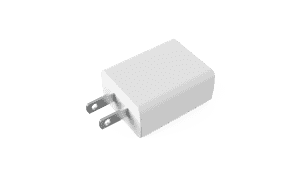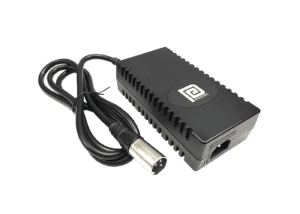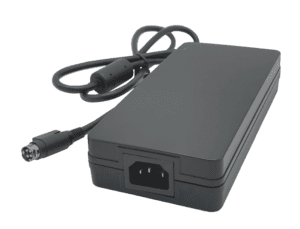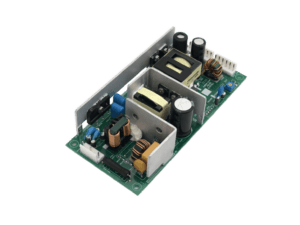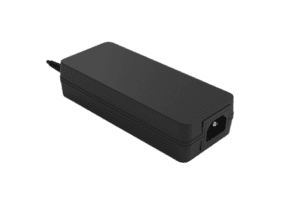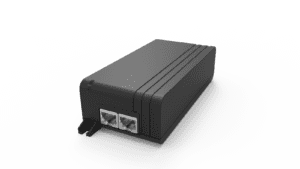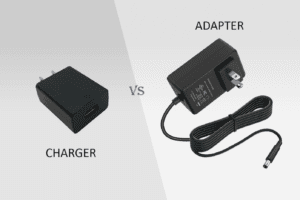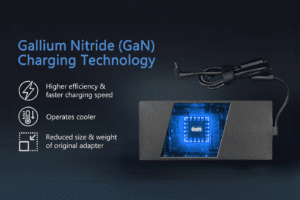BLOG
How AI-Driven Energy Management Systems Will Optimize Charging Schedules for Fleets of Autonomous Devices
Table of contents

As fleets of autonomous robots, delivery vehicles, and mobile devices scale across industries, the complexity of managing when, where, and how these machines charge becomes a growing challenge. Charging every unit manually or on fixed intervals is no longer efficient—or sustainable. The solution? AI-driven energy management systems (EMS) that optimize power delivery, balance grid loads, and keep fleets fully charged with minimal downtime.
AI-driven EMS platforms leverage real-time data, predictive algorithms, and machine learning to make dynamic charging decisions across entire fleets—whether in a warehouse, city, or campus environment. The result is smarter, faster, and greener charging infrastructure built for the demands of tomorrow’s autonomous ecosystem.
In this article, we explore how AI-powered EMS is transforming robotic and autonomous fleet operations, and how Phihong supports the charging systems that make intelligent energy management possible.
Why Static Charging Schedules Don’t Scale
Traditional robotic fleets rely on either fixed charging intervals or manual triggers to initiate recharging. But as fleets grow, this approach causes:
Key Problems
- Charging bottlenecks during peak hours
- Simultaneous charging spikes that overload circuits or the local grid
- Idle robots waiting in charging queues
- Missed charging windows due to poor prioritization
AI-Driven EMS Solves These By
- Using predictive analytics to forecast when each device will need to charge
- Scheduling staggered charging events to avoid energy spikes
- Prioritizing high-usage or mission-critical robots for early access to docks
- Adjusting schedules dynamically based on traffic, battery health, and task load
Smart charging is no longer just about automation—it’s about optimization.
What Is an AI-Driven Energy Management System?
An AI-driven EMS is a software platform that uses machine learning, sensor data, and predictive modeling to manage energy flow across multiple devices, docks, and facilities in real time.
Key Features
- Real-time charge monitoring across all devices
- Predictive modeling for battery depletion based on usage patterns
- Load balancing to distribute power across docks and facilities
- Cloud or edge-based control with optional human override
- Integration with grid pricing and renewable energy systems
Ideal Use Cases
- Autonomous delivery robot fleets
- Warehouse AMRs (automated mobile robots)
- Commercial drones and AGVs
- EV fleets in public transit or logistics hubs
Best Practices
- Connect EMS platforms to all robot BMS data and dock-level telemetry
- Use edge-based decision-making to continue operation during connectivity loss
- Integrate EMS with building energy systems for facility-wide load optimization
- Include fallback charging protocols for critical devices
EMS platforms take charging from a background task to a fleet-wide performance lever.
CLIENT'S QUOTE
"Phihong’s PoE solutions have made a huge difference for us! Our network runs more efficiently, and we’ve seen real cost savings. We couldn’t be happier!"
Benefits of AI-Optimized Charging for Autonomous Fleets
By combining battery health data, usage history, and system priorities, AI-driven EMS helps unlock significant operational advantages.
Top Benefits
- Increased fleet uptime through smarter scheduling
- Reduced electricity costs via off-peak charging and demand response
- Improved battery lifespan with optimized charge rates and thermal profiles
- Energy efficiency through load balancing and predictive planning
- Scalability for managing thousands of robots across zones and facilities
Measurable Impacts
- 15–30% reduction in energy costs
- 20–40% improvement in dock utilization
- Lower maintenance costs due to battery preservation
- Faster time-to-recharge during critical missions
AI doesn’t just keep robots moving—it makes charging faster, cheaper, and more reliable.
How AI EMS Platforms Work with Smart Charging Stations
AI needs data—and smart charging stations provide the real-time metrics that allow EMS platforms to function effectively.
Smart Dock Features
- Telemetry on voltage, current, charge duration, and connector status
- Fault detection for overheat, misalignment, or failed charge attempts
- Communication protocols like CANBus, MQTT, or Modbus
- Edge processors for local decision-making and AI model execution
EMS Integration Points
- BMS handshake protocols to ensure safe, dynamic charging
- Dock priority queues based on AI charge scheduling logic
- Data syncing to cloud platforms for long-term learning and optimization
- Remote override and real-time status dashboards for operators
Best Practices
- Use docks that support OTA firmware updates and dynamic power control
- Equip charging hubs with load-shedding and peak shaving logic
- Design facilities with redundant dock clusters for load distribution
- Monitor both charger health and robot energy profiles in EMS dashboards
Charging hardware must be AI-compatible, data-rich, and responsive to keep pace with next-gen EMS platforms.
AI EMS in Action: Real-World Scenarios
Leading logistics and robotics providers are already leveraging AI-based EMS to streamline fleet operations.
Scenario 1: Warehouse AMRs
- Fleet of 200 robots serving 3 shifts/day
- EMS schedules charge slots during natural workflow gaps
- Robots top-off opportunistically, reducing full charge downtime
- EMS avoids charging 40+ robots at once during shift change, saving energy
Scenario 2: Citywide Delivery Bots
- EMS coordinates curbside and microhub charging stations
- Prioritizes high-traffic routes during peak delivery windows
- Routes undercharged bots to the nearest available dock
- Avoids charging during grid peak hours by delaying low-priority robots
Scenario 3: Airport Disinfection Robots
- AI system syncs with building energy management
- Prefers charging after airport curfew hours
- Auto-detects early battery wear and schedules preemptive charge pauses
- Logs all charge data for safety compliance audits
These aren’t just test cases—they’re the future of intelligent fleet energy management.
How Phihong USA Supports AI-Driven Energy Management Integration
Phihong USA designs AI-ready smart charging systems built to connect seamlessly with energy management platforms. Our technology supports:
- Programmable AC-DC and DC-DC modules with dynamic voltage control
- Charging docks with real-time telemetry, fault logging, and OTA updates
- Edge-ready smart dock controllers with CANBus, RS-485, and Ethernet
- IP67/IP68-rated enclosures for public or industrial deployment
- Engineering support for EMS integration, power balancing, and grid coordination
Whether you’re managing 50 warehouse robots or 5,000 delivery units, Phihong provides the smart, scalable charging infrastructure that AI-driven EMS platforms rely on.

Contact Our Team Today!
Our dedicated sales team and international partners are prepared to support you with your latest projects and initiatives globally.
Explore More with Phihong USA
As we conclude our exploration of PoE technology, it’s evident how these innovations are streamlining power and data integration across various industries. Phihong USA stands at the forefront of this technological advancement, offering a diverse range of power solutions designed to meet the evolving needs of modern industries.
Phihong USA’s extensive product lineup includes:
- Power over Ethernet (PoE) Solutions: Delivering reliable power and data transmission over a single cable, ideal for simplifying network installations and reducing costs.
- AC/DC Adapters and Power Supplies: From compact adapters to industrial-grade power supplies, Phihong provides solutions that ensure efficiency and reliability in various applications.
- Battery Chargers: Customizable chargers for lithium-ion and lead-acid batteries, supporting a wide range of power requirements for mobility and industrial applications.
- Medical Power Supplies: Specialized power solutions designed to meet the stringent requirements of the healthcare industry, ensuring safety and reliability.
Phihong USA is committed to innovation and excellence, continually developing products that meet the highest standards of performance and reliability. Their global reach and dedication to customer support make them a trusted partner in powering the future.
Here are some useful links to explore Phihong USA’s offerings further and bring in new potential clients:
Visit Phihong USA to discover how their advanced power solutions can support your business needs. Whether you’re looking to upgrade your network, or find reliable power supplies, Phihong USA has you covered.
By choosing Phihong USA, you’re partnering with a leader in power technology, ensuring your operations run smoothly and efficiently with top-tier power solutions. Contact Us today!
FAQ
What is an AI-driven energy management system?
An AI-driven EMS is a platform that uses data, predictive analytics, and machine learning to optimize energy delivery across fleets of autonomous or electric devices. It decides when, where, and how much each device should charge—based on real-time battery data, usage history, power grid conditions, and system priorities.
How does AI help reduce fleet charging costs?
AI platforms can:
- Schedule charging during off-peak hours
- Avoid simultaneous charging spikes
- Optimize partial charge cycles for high-priority tasks
- Extend battery health by avoiding deep discharge or thermal stress
This results in lower energy bills, longer battery life, and fewer charging bottlenecks.
Can EMS platforms work with existing charging docks?
Yes, if the charging docks are smart and communication-ready. Platforms like Phihong’s can be integrated via standard protocols (CANBus, UART, Modbus) and upgraded via firmware. If your dock provides telemetry, EMS platforms can use it for decision-making. If not, retrofitting or upgrading the dock controller may be needed.
Is edge computing necessary for EMS?
Not always—but it helps. Edge-based EMS ensures real-time decision-making, even if the cloud connection is lost. This is especially useful in critical facilities, mobile hubs, or public deployments where downtime must be avoided. Phihong supports edge-enabled smart docks for just this purpose.
How does Phihong support EMS integration?
Phihong provides:
- Smart charging hardware with embedded AI hooks
- Firmware support for real-time scheduling and telemetry
- Engineering consultation for load balancing, energy analytics, and EMS APIs
- End-to-end assistance for robot OEMs and facility operators adopting EMS platforms
We don’t just power fleets—we help you optimize, coordinate, and scale charging through intelligent infrastructure.

